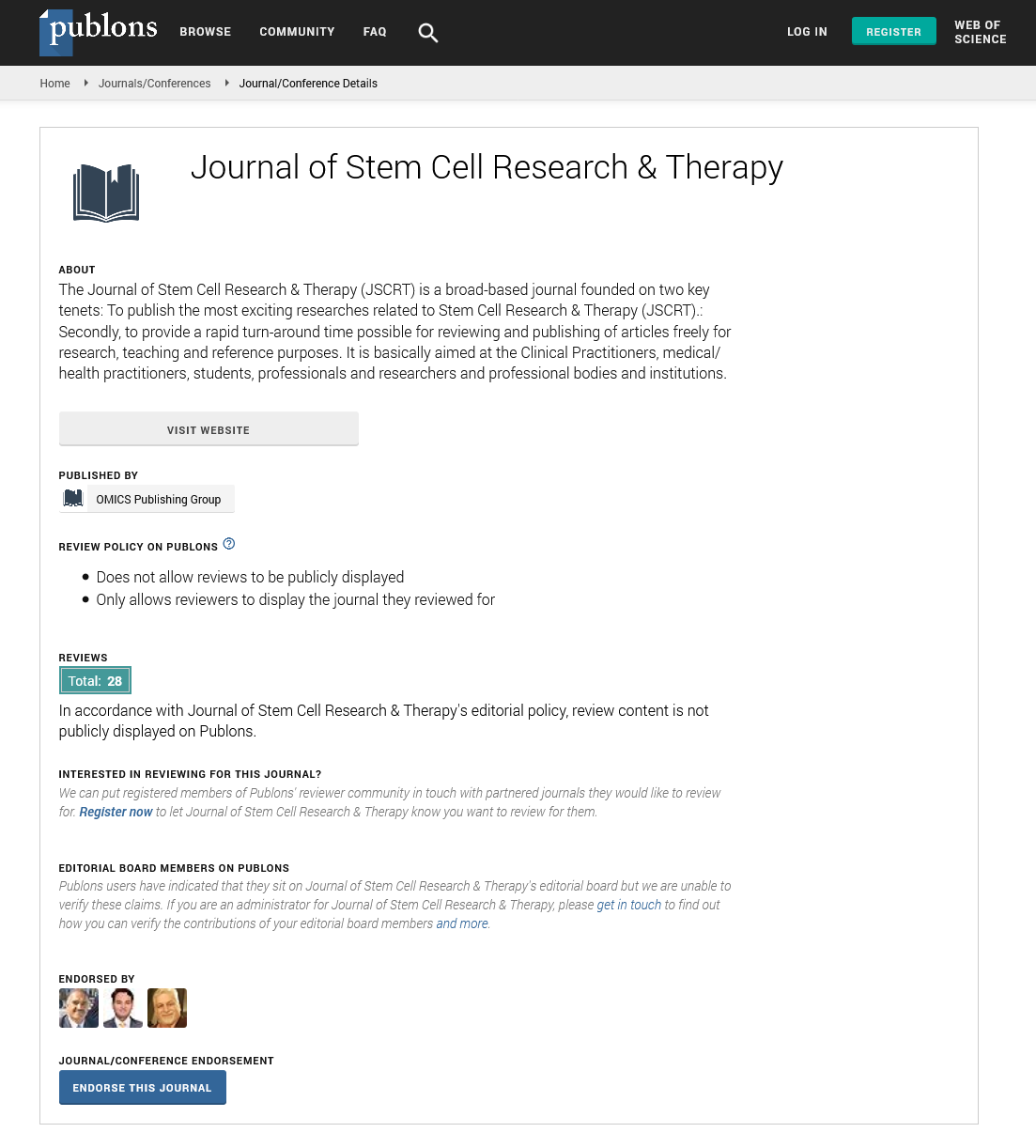Indexed In
- Open J Gate
- Genamics JournalSeek
- Academic Keys
- JournalTOCs
- China National Knowledge Infrastructure (CNKI)
- Ulrich's Periodicals Directory
- RefSeek
- Hamdard University
- EBSCO A-Z
- Directory of Abstract Indexing for Journals
- OCLC- WorldCat
- Publons
- Geneva Foundation for Medical Education and Research
- Euro Pub
- Google Scholar
Useful Links
Share This Page
Journal Flyer

Open Access Journals
- Agri and Aquaculture
- Biochemistry
- Bioinformatics & Systems Biology
- Business & Management
- Chemistry
- Clinical Sciences
- Engineering
- Food & Nutrition
- General Science
- Genetics & Molecular Biology
- Immunology & Microbiology
- Medical Sciences
- Neuroscience & Psychology
- Nursing & Health Care
- Pharmaceutical Sciences
Abstract
Advanced Model for Evaluation of iPSCs Lung Engraftment
Tokalov SV, Fleischer A and Bachiller D
a number of pathologies affecting different organs, including the lung. One of the main challenges affecting iPSCs based therapies is the low level of iPSCs engraftment. While the exact mechanisms by which systemically administrated iPSC might be recruited to lung remain poorly understood recent results show that their ability to engraft might not solely be a property of iPSC but might be caused by some events in recipients’ lungs, including modifications of some signaling pathways due to damage, repair or developmental processes. Engraftment of Infrared Fluorescent Protein (iRFP) expressing iPSCs (iRFP-iPSCs) into intact and damaged lung was investigated 2 weeks after hemithorax (HTI, right lung) irradiation with 0 (sham treated control), 10 and 20 Gy, or after intratracheal administration of bleomycin (BLM, 0.075U) to 8 weeks old mice and 1 day old intact pups. Location of iRFP-iPSCs was recorded in vivo, ex vivo during autopsy, in the dissected organs and in tissue sections 1 day and 1 week after iRFP-iPSCs administration. Increased enrollment of single iRFP-iPSCs into the both HTI and BLM challenged lungs was detected ex vivo and in the dissected organs and was also confirmed by histological examinations shortly after administration, but did not increase in time. In contrast, injection of iRFP-iPSCs to 1 day old intact pups allowed for robust lung uptake, as well as for the development of donor-derived iRFP-iPSCs colonies in lung, as was revealed 1 week after their transplantation. One day old pups represent an useful model in which to analyze iPSCs capture and engraftment in the lung.

